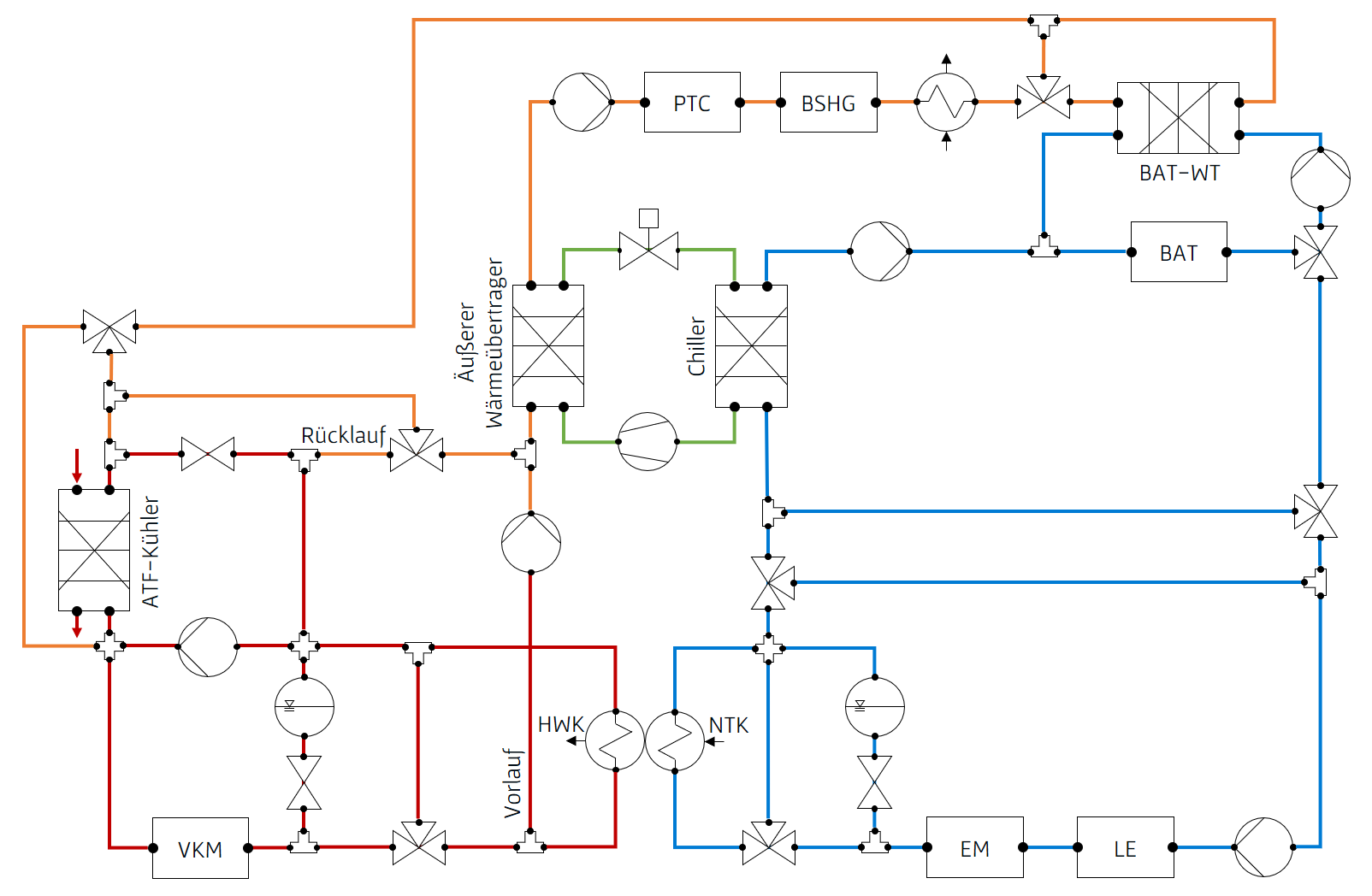The research group for simulation works on the computer-aided modeling, analysis and optimization of drive systems. Both individual drive components and complex overall systems are simulated using state-of-the-art or specially developed tools. In the research and development process, potential advantages and weaknesses of new drive technologies can thus be determined at an early stage, and solutions can be identified to improve target parameters such as efficiency, emissions or energy consumption.
Simulation
3D simulation (structural simulation, flow simulation, thermal analysis)

A wide variety of issues in the development of new drive systems, especially at the component level, can be investigated in detail using 3D simulation. Our expertise covers a wide range of physical domains. These range from reactive gas mixture flows, such as those occurring during gas exchange in the combustion engine, through to electrochemically, thermally and fluid mechanically coupled simulations for the design of innovative battery cooling systems, and structural simulations with lightweight materials for weight reduction in the powertrain. Cutting-edge simulation methods are supplemented by our specially developed modeling approaches and workflows as required.
Multibody simulation of dynamic systems

Multi-body simulation (MBS) is an established tool for studying the dynamic effects of moving bodies in drive systems. We draw on our MBS expertise for example in designing vibration reduction systems such as centrifugal pendulum absorbers, reducing friction in the powertrain, or designing new types of swivel test stands for electric motors.
1D simulation of integrated, complex systems and processes

In order to assess the behavior of individual components and their interaction on system level, we carry out 1D simulations of the transfer of heat, material and information. The components are modeled physically or in a map-based system. Depending on the task, they are designed to be as complex as necessary but as simple as possible. For example, a complete vehicle simulation model is available that can calculate any powertrain configuration, from an internal combustion engine through to battery electric or fuel cell vehicles, as well as any hybridized configurations. On this basis, it is possible to determine the energy/fuel consumption of new drive systems, to calculate the impact of lightweight construction measures, or to digitally test model-predictive control algorithms for thermal management in vehicles.
 Fraunhofer Institute for Chemical Technology ICT
Fraunhofer Institute for Chemical Technology ICT